How to Understand a Seed Catalog
Inside: Learn how to understand a seed catalog and what all the terminology in a seed catalog means.
The garden catalogs have started arriving.
Is it me or do they seem to come earlier and earlier each year? (I didn’t usually get any until after Christmas. This year I got two at the beginning of December!)
If you are new to gardening, a seed catalog can seem overwhelming.
So many different varieties.
So many beautiful colors.
What do those zones mean?
And what about all the crazy letters after the plant names?
You may be ready to throw your hands up and say forget it. I’ll just buy plants from my local garden center.
But if you want to save money growing a garden or you want to plant root crops like carrots and radishes, you need to understand the basics of a seed catalog so you buy seeds that will work in your backyard garden.
Never fear. I’ll walk you through the seed catalog terminology and tell you what you need to focus on and what you can ignore so you can make an informed decision. And if you aren’t sure how to choose what to grow, check out my post on How to Choose the Vegetables to Grow In Your Garden.
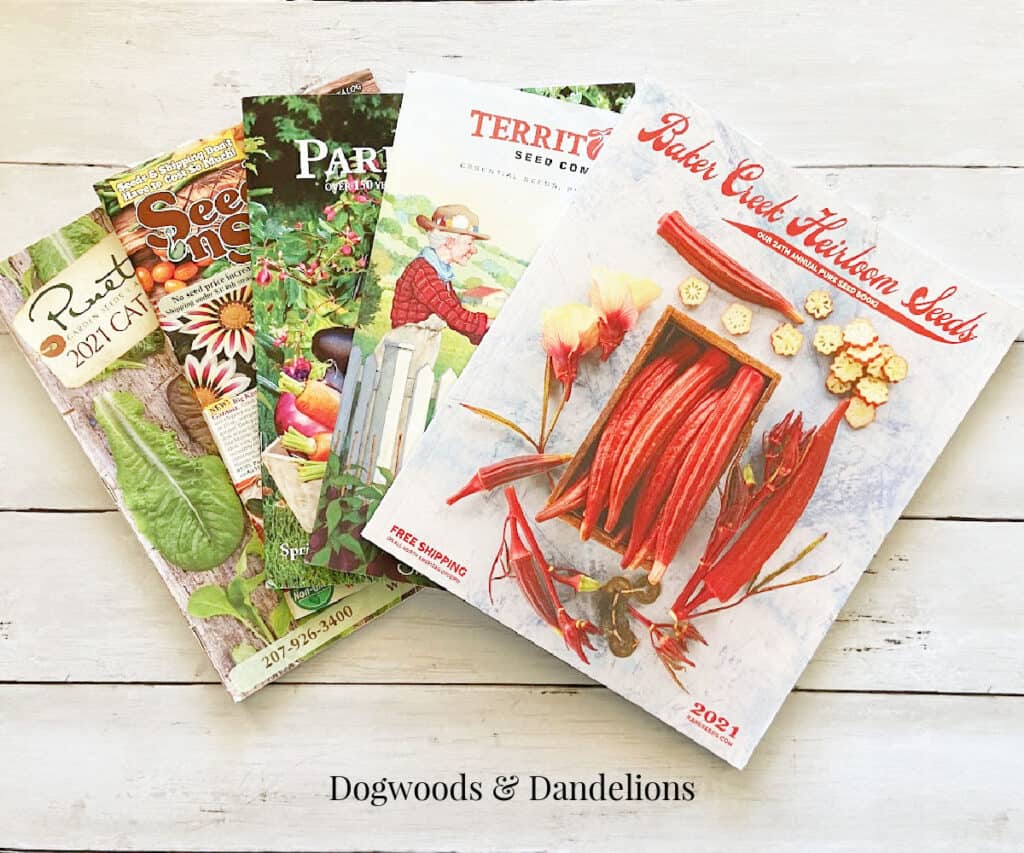
Affiliate Disclosure: Please note that some of the links in this article may be affiliate links and I may receive a small commission if you purchase something through a link. It will not change your cost. As an Amazon Associate, I earn from qualifying purchases. For more information, see my disclosures page.)
Why Buy From Seed Catalogs?
One of the main reasons I like to buy seeds from reputable seed companies through their catalogs is that the catalogs usually have longer descriptions of the plant varieties than on a seed packet. Many times they will also add flavor notes to help you decide if you would like the taste.
Another reason to buy from catalogs (or online) is that there is a larger variety of seeds to choose from. Of course, if you aren’t careful this can lead to overwhelm and purchasing too many seeds.
Ever notice how the descriptions make everything sound good? And seed catalogs are usually the first places to get new varieties of seeds.
The one downfall to buying from a catalog is that not everything in that catalog is likely suited for your growing area. If you are buying seeds from a local store, they generally only stock seed varieties that are known to do well in your area.
USDA Hardiness Zones
First, let’s talk about gardening zones. This handy map from the USDA divides the United States into zones with similar climates. It is based in 10-degree increments and the areas are broken up by average annual minimum winter temperature. The map is interactive so you can find your hardiness zone without too much trouble.
Keep in mind, your area may have a micro-climate that differs somewhat from the chart. But it can still be helpful for determining what plants will work for your area and which ones won’t.
Once you have determined your gardening zone, you will want to be sure and choose varieties that do well in your zone. Yes, you can sometimes find success with vegetables that aren’t recommended for your zone, but if you are a beginning gardener, I would steer clear of any kind of plant that isn’t tested in your zone.
Why Do the Catalogs Talk about Days?
In a seed catalog, you will often see a number of days listed just after the variety. What does that mean? Well, the number of days listed is the average number of days it will take for that variety to have something ready to harvest.
Please note that I said AVERAGE. It can be a few days to a week earlier in some climates and a week or so later in other climates.
Not only does the days to harvest depend on the climate, but it also depends on the weather each year. Warmer days will generally speed up the days to harvest while a cold snap can delay it.
This means that if you start Early Prolific Straightneck Squash seeds in the ground, in 48 days you should reasonably expect to be able to harvest a squash.
But there is one caveat. For tomatoes, peppers, and the like, the number of days doesn’t include those days spent indoors as seedlings. The number of days to harvest typically starts when you put the transplants in the ground.
So even if you start seeds indoors in early February for Super Sweet 100 Hybrid Cherry Tomatoes (65 days) don’t expect to have tomatoes in April. However, if you put the transplants out on April 15, you can reasonably expect to have tomatoes 65 days later in late June.

Understanding Plant Descriptions in a Seed Catalog
The descriptions of the plants in a seed catalog contain a wealth of information if you know what to look for. These are some of the things to look for when you are choosing the right seeds for your garden.
How a Variety Tastes
When looking through a seed catalog, note whether or not the catalog mentions how a specific variety tastes. A tomato plant might produce uniform fruit that resists cracking, but if the taste is lacking, well… I would just as soon skip it.
I am always leery of plant descriptions that don’t mention anything about how the vegetable or fruit tastes. Usually, the seed catalog will give an indication of the flavor (buttery for squash, sweet for a bell pepper, etc.)
But I’ve found that varieties with no flavor description tend to have a lackluster flavor in my garden.
And many times varieties that are grown for commercial production don’t have the same homegrown flavor as other types. The commercial varieties are usually bred to be suitable to hold up well in transit.
How to Plant the Seeds
Most catalogs will have a section that tells you how to plant the particular seeds.
Should they be started indoors before your last frost?
Should they be sown directly in the ground?
How long will it be till you can harvest the vegetable?
Should they be planted in full sun or is some shade okay? How much sun does the plant need?
Read the plant descriptions carefully to ensure the variety will work in your particular garden. They will give you the ideal conditions to grow the plant best.
However, we don’t always have perfect gardening conditions but if your garden doesn’t meet most of the growing conditions you aren’t likely to find success.
What the Catalogs Don’t Say
Sometimes it’s what the catalog DOESN’T say that you have to look for.
Another example of what the catalog doesn’t say comes into play with green beans. I don’t like to grow green beans that have strings. A rogue string is enough to trigger my gag reflex. So I always grow stringless varieties. If the catalog doesn’t say a particular variety is stringless, it most likely isn’t.
Instead, look for what you want in your fruits or vegetables. Do you want onions that store better or ones that taste sweeter to eat right now?
Are you planning to preserve tomatoes or do you just want some for eating fresh?
Do you have room for zucchini to sprawl or do you need compact plants? All these things make a difference in what seeds to buy.
What All Those Crazy Letters Mean
Those crazy letters after the variety name do have a purpose. The letters after most seed varieties tell you what diseases the plants are resistant to.
If you have trouble with a particular disease, looking for a disease resistant variety is likely to give you better results. This doesn’t always mean the plant is totally immune to the disease, but the disease is less likely to affect that variety than other types.
For instance, the tomato variety Mountain Merit, had the following series of letters after the plant name: VFFFNTswvEbLb. This looks like a bunch of jibberish.
However, upon consulting the catalog, you should be able to find a listing (a key) of what disease resistance these letters describe. In this case, the letters mean this variety is resistant to Verticillium Wilt (V), Fusarium Wilt Races 1, 2, & 3 (FFF), Nematodes (N), Tomato Spotted Wilt Virus (Tswv), Early Blight (Eb), and Late Blight (Lb).
There are different diseases that affect different crops, so each vegetable type will have a key to explain what the disease resistance letters mean.
If you are unsure what diseases you may have in your area, you can consult a more experienced gardener in your area or your local agricultural extension service. (If you live in North Carolina, here is where you can find your local service. For all other states, search agricultural extension service + your county.)
Open-Pollinated vs. Hybrid
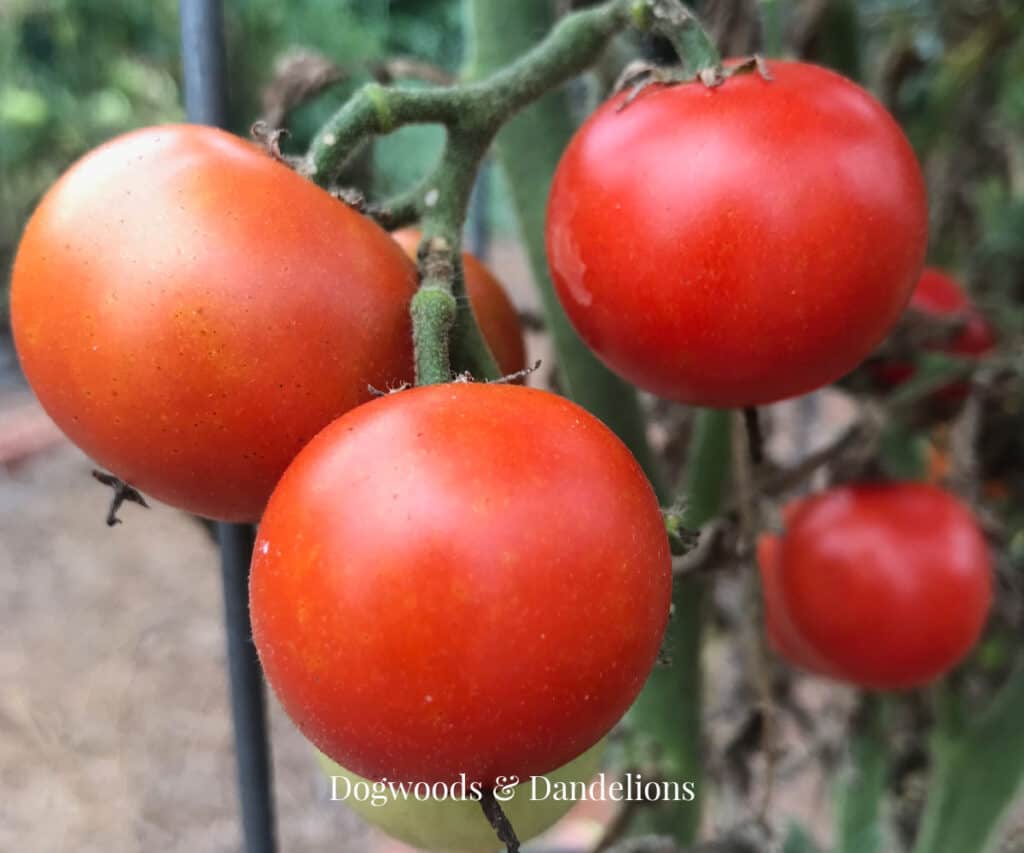
Open pollinated seeds and plants, usually denoted OP means the plants are pollinated by wind or insects. If you plant a seed from an open pollinated variety, it will look the same next year.
Heirloom seeds and plants are open pollinated plants that have been around for at least 50 years. If you are planning on saving seeds from your vegetables to plant in next year’s garden, you need to grow open-pollinated varieties.
Hybrids, often denoted F1, are often more vigorous and produce more food than open-pollinated vegetables. However, a common misconception is that hybrids are genetically modified. They are NOT.
Hybrid seeds and plants are just the result of breeding two different varieties to produce a third variety that has superior characteristics, such as better disease resistance or more fruit.
There has been a lot of discussion lately as to whether open pollinated and heirloom varieties are better than hybrids. I personally feel they both have their place.
Hybrids typically have better disease resistance but open-pollinated and heirlooms are often great choices for flavor and for seed saving. I tend to plant a few varieties of each but the choice is up to you.
For more information on hybrid vs. open-pollinated seeds, check out this post.
A Few Other Notes on Understanding a Seed Catalog
Most seed catalogs will give you notes about how to start the seeds and when to start them. The catalogs also usually will tell you how big the vegetable or fruit will grow and how much fruit or the number of vegetables you can expect to harvest from each plant .
Cherry tomatoes come in sizes ranging from 1/2 inch to almost 2 inches so if you prefer a specific size cherry tomato, you’ll know which varieties to pick.
If you are planning on growing vegetables in a small space, you need to look for kinds that don’t spread too much. There are many varieties of vegetables that are suitable for containers or small space gardens and oftentimes this is noted in the seed description.
Determinate vs. Indeterminate Tomatoes
Tomatoes are always a popular vegetable to grow in the backyard garden. And choosing the tomato seeds for your vegetable garden can be difficult. These explanations should help you choose the best tomatoes for your location and growing season.
Tomato descriptions will tell you whether the tomato plant is determinate or indeterminate. Determinate means the plant will grow to a certain height and then stop growing.
This means most of the tomatoes will ripen over a 4 to 6-week period. This is great if you plan to preserve a lot of tomatoes. It is not so great if you want tomatoes all season long.
Indeterminate tomatoes produce tomatoes over a much longer period of time, though they often don’t produce as many at once. They also will keep growing all season long so these varieties need lots of staking to keep them from toppling over.
If you are planning on preserving tomatoes, I would plant some determinate varieties and some indeterminate kinds. For those of you who have no interest in putting up tomatoes, I would plant indeterminate varieties.
But if you still wind up with too many tomatoes, learn the easiest way to preserve them.
How Hot Is My Pepper?
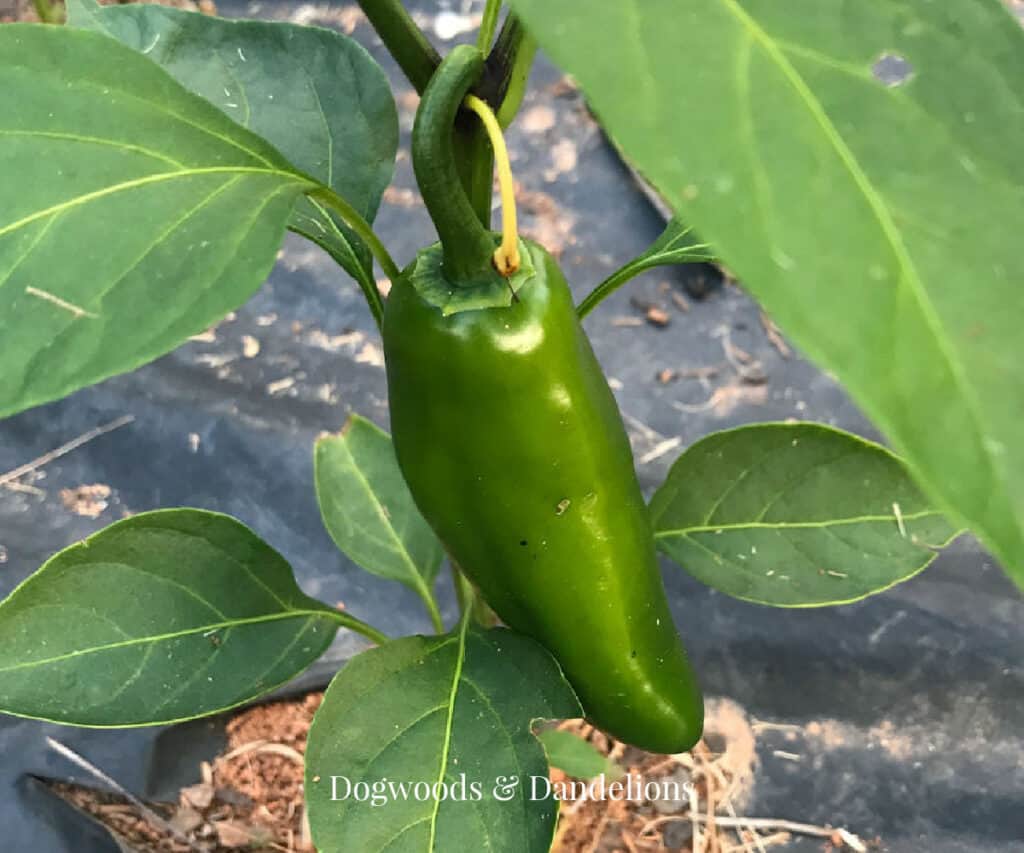
Hot peppers are rated on a scale called the Scoville scale. This rating system tells how much heat is in a particular pepper variety.
Bell peppers rate less than 100 while some hot peppers such as the Carolina Reaper measure above 3 million Scoville Heat Units (SHU).
This rating scale can help you determine how hot a pepper will be. However other factors such as the amount of water the pepper receives and how hot the summer gets can create a more or less spicy pepper. For more information on the Scoville heat scale, you can read this article on Wikipedia.
GMO Seeds?
Most seed catalogs do not sell GMO seeds. (GMO stands for genetically modified organisms.) Almost all the seed companies that I’ve received catalogs from have signed the safe seed pledge stating that they do not knowingly buy or sell genetically engineered seeds or plants. So thankfully GMO seeds are not readily available to the home gardener.
A Few of My Favorite Seed Catalogs
So now that we’ve discussed how to understand a seed catalog, I thought it would be appropriate to share a few of my favorite seed companies.
Please note that I don’t order from all of these catalogs every year. I pick 2 or 3 to order from based on their seed selection and what I want to try in my garden this year.
Botanical Interests – They have lots of great seeds and everything I planted had a high germination rate. The catalog is so beautiful it could be a coffee table magazine.
Johnny’s Selected Seeds – This is a great source for some different varieties. They have a research farm in Albion, Maine and they don’t sell any seeds they haven’t grown or any tools that they have not used on their farm.
Seeds n Such – This is my favorite place to order low-cost seeds. I’ve been ordering from them for several years and they always send quality seeds for less money than most places. (In recent years, their prices and shipping have increased. While I still do order from them occasionally, the price increases make them competitive with the other places I’ve listed.)
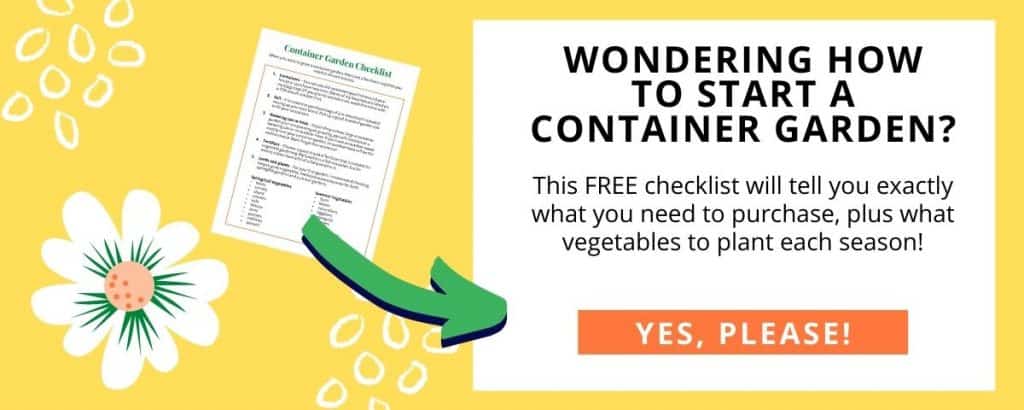
Territorial Seed Company has been around for 40 years. They have lots of varieties of vegetables and often carry plants of some unusual varieties as well. Their seed catalog has lots of good growing information for all types of vegetables.
Just this year, I placed my first order from Pinetree Garden Seeds. Everything arrived quickly and I have had great success with the seeds I’ve ordered. This is a family owned company that has been in business for 40 years.
You Can Also Purchase Many Seeds Locally
I also tend to purchase some seeds locally. I have had great success with Ferry Morse brand of seeds and they can often be found at big box stores and your local grocery store.
If you are purchasing seeds from a catalog or online, don’t forget to factor in the shipping costs if you are trying to save money. Shipping has gotten quite expensive lately and if you aren’t looking for a specific variety of something it may be best to shop at your local stores.
Have you ever been overwhelmed by all the seed choices? I know I sure have. One of the first things I like to do when I get a seed catalog is make a wish list of all the seeds I would like to do. Later, I whittle it down to a reasonable list after checking out several different catalogs.
Got Questions for Me?
If you pick up a seed catalog this year and find something you don’t understand, please comment below and ask. If I don’t know the answer I’ll be glad to research it and get back to you as well as update this post with the info.
Related Posts
- How to Understand a Seed Packet – Some of the same information is included but seed packets also have additional information not included in a seed catalog.
- How Long Does It Take to Grow Vegetables From Seed?
- Cool-Season Versus Warm-Season Vegetables – What’s the Difference?
- How to Start a Garden on a Budget

Meet Julie
I’m a farm girl born and bred in North Carolina. I’ve been growing a vegetable garden for over 20 years (and helping my Mom grow hers even longer). I’ve been raising chickens in my bathtub and backyard for 12+ years. I believe that homegrown food can be made simple. Let’s get started.
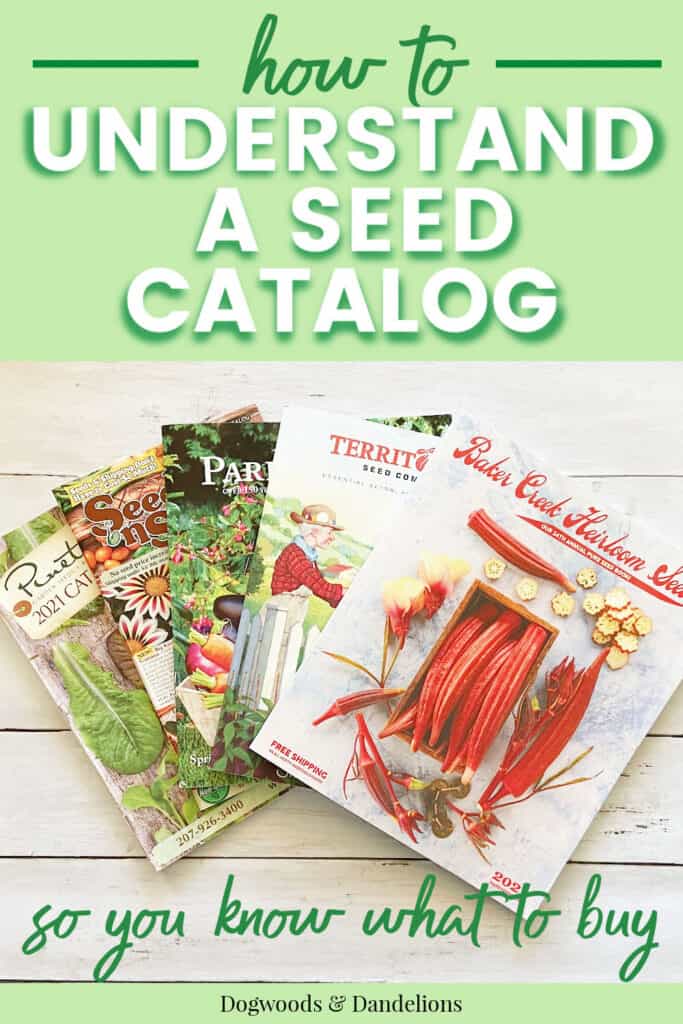

Thanks for all the info! Has no idea there was so much info on seeds.
Do you know the best place to purchase seeds for indoor sprouting?
I’ve had great luck buying seeds from True Leaf Market for growing sprouts. If you are just wanting seeds to start indoors and transplant to the garden later, I’ve purchased from Seeds N Such, Territorial Seed, and even my local hardware store. As long as the seeds are new, I’ve had great germination rates.